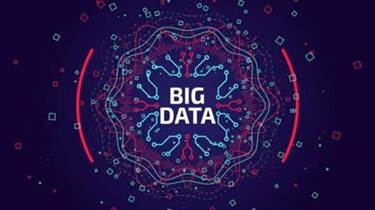There are multiple distributions of this platform – from ISVs as well as hosted-on cloud offerings from all the major public cloud vendors. In a dev/test environment, you might not need automation for deploying clusters. But in production clusters must be installed using some automation workflow as it ensures consistency in repeatable tasks and assists kubernetes development in cluster recovery when required. K3s is backed by Rancher, which is one of the biggest companies in terms of delivering Kubernetes-as-a-service. On Linux and macOS, it’s as simple as running brew install minikube, and on Windows, you run choco install minikube. Once the package manager is finished, minikube will be successfully installed.

You’ll still feel like you’re running a local cluster at times, but more on that later. In addition, it’s important to understand whether you’re getting a full-blown Kubernetes version on a small scale or if you’re getting a modified version. And it’s important to understand the performance implications of the tool you’re choosing. The current macroeconomic moment heightens the need for doing things faster and more efficiently.
Successful App Development Project: ClickIT & Fletes Lozmar
Anything that can reduce cognitive load and keep developers focused on their core tasks, particularly when market conditions are challenging, is a good investment. With this in mind, let’s look at why creating a developer-focused Kubernetes platform makes sense and then explore what components you need to build it. Easily distribute and share Docker images with the JFrog Artifactory image repository and integrate all of your development tools. Trust that your development pipeline workflow will work in any environment – locally and in the cloud.
- That will increase the developer’s knowledge of how the production environment works and reduce the gap between operations and development.
- In 2018, Google formally ceded operational control of Kubernetes to the community.
- Today, this is the tool you’re most likely to use since most engineers will already have Docker Desktop installed.
- Earlier this year, we at Earthly embarked on a journey to bring better builds to the world.
- Our services and infrastructure change constantly, so the vagrant build was almost always broken.
Most runtime engines are a few megabytes, while virtual machines need 4-8 gigabytes of storage space. Thus, containers are portable, highly scalable, secure, support multiple cloud platforms, and are DevOps-friendly. The recent pandemic and lockdown forced many companies to undergo accelerated digital transformations and as a result, the adoption of Kubernetes rapidly increased. According to a 2021 Kubernetes Adoption Survey by Portworx, its adoption grew by 68% during the pandemic.
Support
File systems in the Kubernetes container provide ephemeral storage, by default. This means that a restart of the pod will wipe out any data on such containers, and therefore, this form of storage is quite limiting in anything but trivial applications. A Kubernetes Volume provides persistent storage that exists for the lifetime of the pod itself. This storage can also be used as shared disk space for containers within the pod. Volumes are mounted at specific mount points within the container, which are defined by the pod configuration, and cannot mount onto other volumes or link to other volumes. The same volume can be mounted at different points in the file system tree by different containers.
Kubernetes costs less, but less than what? – InfoWorld
Kubernetes costs less, but less than what?.
Posted: Mon, 15 May 2023 09:00:00 GMT [source]
It also automatically scales your application to meet business needs, thus freeing up human resources to focus on other productive tasks. Complicating matters is the fact that most enterprise developers using local development environments are blocked from getting hands-on access to Kubernetes containers and clusters. A lack of access leads to a lack of understanding, leaving cloud developers feeling like they’re flying blind in the dark. “It is tough to learn something you cannot touch,” says Burr Sutter, Red Hat Chief Developer Evangelist. “Of course, minikube, KinD, K3S and Docker Desktop help but are still incomplete solutions.” Since Kubernetes is programming-language-agnostic, platform-agnostic, and OS-agnostic, it offers a wide range of deployment options.
Cloud Manager
Kubernetes makes services available when and where they’re needed by monitoring system health. Kubernetes ensures availability and provides resiliency through its self-healing capabilities. Kubernetes finds and restarts failed containers, reschedules failed nodes, and destroys containers that are non-responsive. Speed development with the simplicity of Docker Compose CLI and with one command, launch your applications locally and on the cloud with AWS ECS and Azure ACI.
Even if you have reached a conclusion that Kubernetes is just not for you, there is little you can do to avoid it. Kubernetes saves companies millions of dollars every year by allowing them to do more with less IT manpower and efficiently utilize the infrastructure that powers their applications. These frameworks are starting to duplicate each other in features and functionality, but Kubernetes remains immensely popular due to its architecture, innovation, and the large open source community around it.
An infrastructure framework for today
The other options are either CNCF projects or Kubernetes Special Interest Groups . In recent years, Docker Desktop has taken over minikube in terms of popularity. Looking at the trend chart, it’s important to remember that Docker Desktop, of course, also offers regular Docker, which will skew the popularity a bit. However, it’s fair to say that being able to run Kubernetes using the already-installed tool has made many choose this option.

This means that you’ll likely get a cluster that looks like what you’re used to in production, as long as your use cases aren’t advanced. Docker Desktop is very opinionated when it comes to Kubernetes or at least as opinionated as you can https://globalcloudteam.com/ get with Kubernetes. For most use cases, you won’t feel a difference between using Docker Desktop and a cloud provider; however, in the cases where you would normally make some special configurations to Kubernetes, you’re out of luck.
Managing custom and third-party services with a spec
Meanwhile, Docker allows for the creation and maintenance of containers to begin with, at a lower level. Qovery turns your existing IaC infrastructure and Kubernetes manifests into repeatable blueprints for complete environments. To experience first-hand the power of Qovery’s On-demand environments,start a 14-day free trial. This is one of the aspects of a good development experience described above.

Similarly, machines that make up the cluster are also treated as a Kubernetes resource. The provider implementation consists of cloud-provider specific functions that let Kubernetes provide the cluster API in a fashion that is well-integrated with the cloud-provider’s services and resources. In Kubernetes, namespaces are utilized to segregate the resources it handles into distinct and non-intersecting collections.. They are intended for use in environments with many users spread across multiple teams, or projects, or even separating environments like development, test, and production.
Deploying from source onto Kubernetes
It works by spinning up Docker containers to act as nodes in your cluster, which are based on an image created by kind. However, if you want to use your own image, that’s also possible using the –image flag. For a long time, minikube was by far the most popular option for local Kubernetes development. Providing a simple CLI tool to start and interact with a Kubernetes cluster was a great option for most engineers to get a simple cluster working. On top of that, it’s possible to select different drivers so you can choose for yourself whether you want a container or VM-based cluster.
Comentários